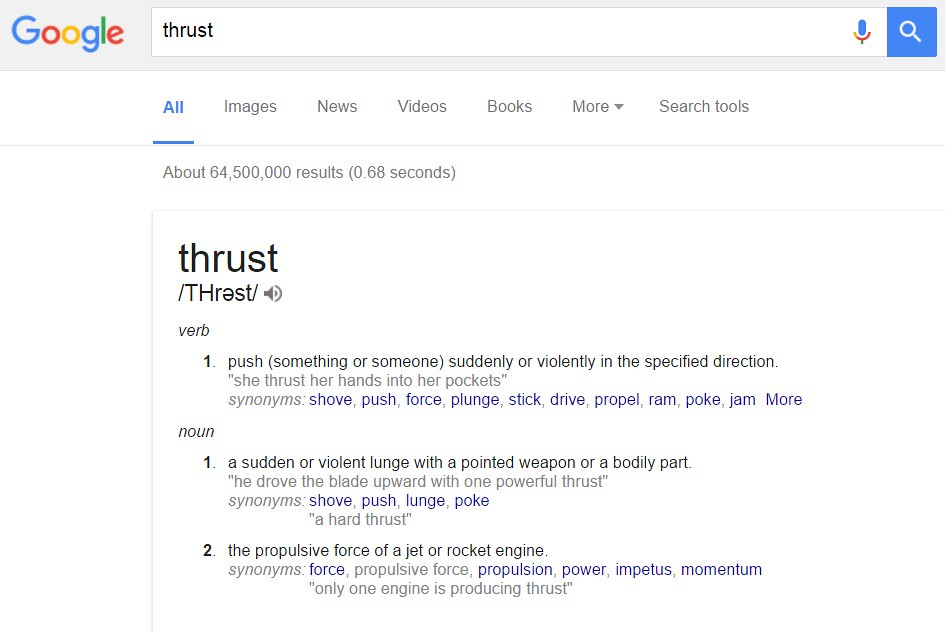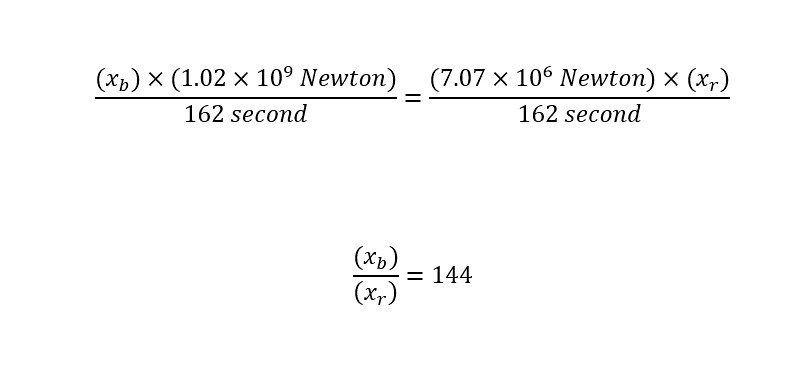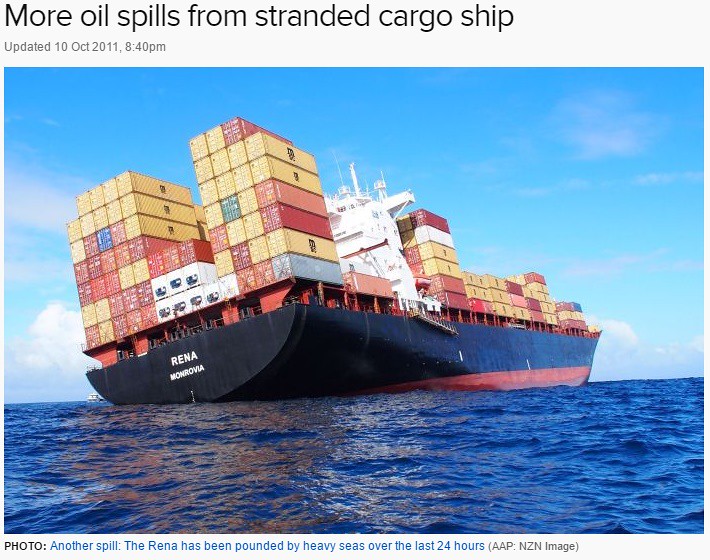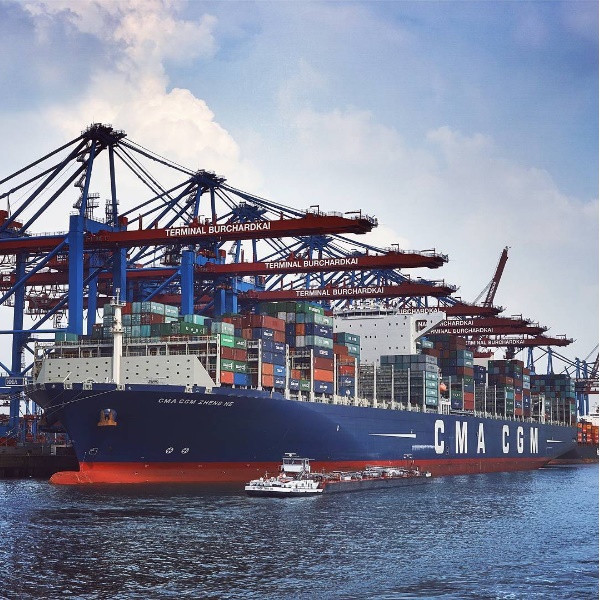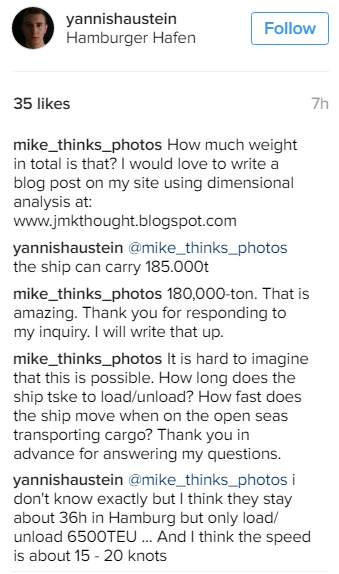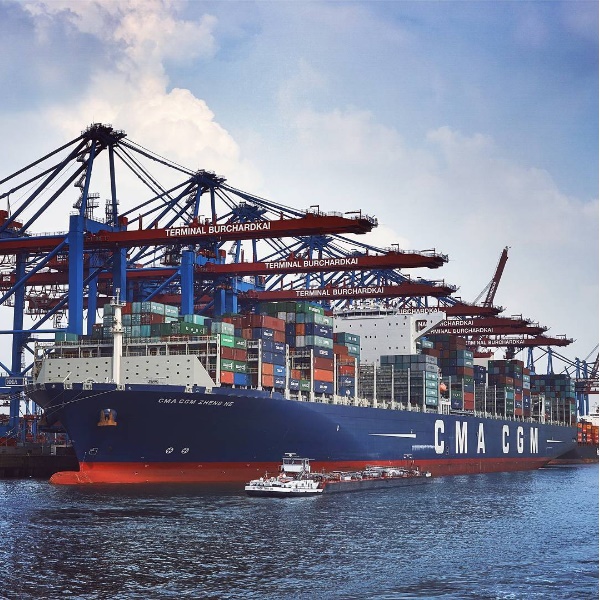“This raises serious questions about the reliability of the SpaceX launch vehicle,” said Loren Thompson, a defense analyst at the Lexington Institute, which receives money from Boeing Co., a SpaceX competitor. “They are taking this technology to the limits.”
Boeing is not a competitor since Lockheed Martin and Boeing formed a relationship called the United Alliance Launch -- that funds SpaceX's adventures. Additionally, the analyst is speaking in terms of experience. Regardless of opinion, the pace at which Elon Musk is pushing and promising payloads into space is calling into question the reality of delivering such low cost and reliable delivery. In order to understand arguments either way, a closer look at the space ship might help us understand the challenges. As a metric for comparison of the thrust required to project objects into space, a freight ship might suffice.
The post below was written in relation to the terrible accident that occurred on September 1, 2016 in Florida at the Space Station. Here is a video of the unfortunate explosion that occurred before launch while filling the fuel tanks on the rocket:
In order to understand the magnitude of the disaster shown above, dimensional analysis needs to be carried out. First, a short discussion of the commercialization of space might serve the reader well as a starting point.
Space Exploration Takes Time, Patience, And Funding!
Space exploration by various countries around the world has been around for decades. Research and discovery in the area takes a considerable amount of time and funding. Why? There exists many reasons that are questionable. What is not questionable is the fact that NASA has considerable experience and extensive analysis of what works and what does not work.
Furthermore, there has been a decline in funding for NASA projects over the last few decades which is truly disappointing.
What is the thought process behind the decline in funding?
Again, the answers are numerous and questionable. Another unquestionable certainty is the deliverable technology that is "spun off" from such research and design that hits the market in the form of everyday products ranging from foam pillows (space pillows) to special lubricants (that have a dynamic range of parameters). Undoubtedly, our lives are better as a result of the R&D that NASA has completed over the last few decades. There is no question there.
Why commercialize space?
Another fascinating yet open-ended question. Since the decline in funding, maybe the large aerospace corporations are looking to increase their profit margins back to the point during the hey-day of aerospace R&D. Regardless, the promises and results that are arising today as a result of the new direction of space flight are making investors and the public uneasy.
Just this week, the space arm of Virgin Airlines -- Virgin Galactic promised to resume R&D testing to send high-paying customers into the upper atmosphere - lower space orbit. Here is an excerpt from an article in the Los Angeles Times this week:
SpaceShipTwo eventually will be in the business of carrying tourists who have paid up to $250,000 into space. The sleek spaceship will be released at about 50,000 feet by its carrier aircraft, then propelled by rocket to more than 50 miles above the Earth — past the point where NASA and the U.S. Air Force consider a passenger to be an astronaut.
Last summer, the National Transportation Safety Board said the first SpaceShipTwo broke apart because the copilot had opened the aircraft's movable tail, or “feather system,” too early. The system is intended to help the craft slow down after its descent from the Earth's atmosphere.
The NTSB placed most of the blame on the plane's builder, Mojave-based Scaled Composites, which is owned by Northrop Grumman Corp. The agency said the plane's design should have protected against the possibility of this human error.
These types of results are exciting from a possible consumer standpoint. Although, the loss of life is unacceptable. Especially, since space and aircraft travel have been optimized over the course of many decades. What is the difference? Today's exploration is being pushed beyond limits -- too fast -- I would argue.
New materials and research results are rolling off of the academic press without proper testing before being incorporated into new technology. This has always been the case with the toxicity of chemicals in consumer products. The government is finally starting to take a closer look into the matter with the newly update Toxic Substance Control Act (TSCA) reform (different subject -- same concerns). Dr. Richard Denison of the the Environment Defense Fund writes extensively about the subject -- here.
How do we understand the magnitudes of such discoveries?
Returning to the commercialization of moving cargo into space, can we visualize the feat that is to be overcome in order to obtain success?
As I mentioned above, NASA has devoted a significant amount of time in Research & Design over the last few decades. I decided to show a few videos of the advancement in testing and construction of critical components that make-up a rocket engine boosting a payload (cargo) into space. Specifically, I focus on two major components: Fuel tank and Rocket engine booster.
Fuel Tank Construction:
Imagine trying to launch a payload of several tons up into space. What does such a feat require? First, the design of the rocket should be sufficient to meet the criteria of getting the cargo into space. At the very least, the fuel tanks should be sufficient to hold enough fuel to lift the payload into space.
As you will recall in a previous blog post on the gases helium and hydrogen, in order to arrive in space, the molecules of either gas must overcome the gravitational pull of Earth's gravitational field. The escape speed (escape velocity) was determined to be around 7 miles per second. Wow!
How much fuel would be required to lift a giant space rocket?
Below is a video of the SpaceX falcon 9 fuel tanks being processed -- taken from the spaceX youtube channel:
Here is a time-lapse video of the construction of such massive tanks from NASA at the Marshall Space Center:
An enormous amount of consideration must be devoted to the design of the fuel tanks. Especially, when considering the temperature of the liquid fuel (cryogenic temperatures) being consumed. Remember, the liquid hydrogen needs to be stored at cryogenic temperatures -- at around - 423 F or - 252 C. That is freezing. Special care must be taken to avoid any explosion or sudden loss of fuel. From the time the space craft is filled, the fuel is evaporating. With the temperatures this cold, it is amazing that the controlled explosion -- i.e., controlled burn -- launch is possible. Next, lets look at the rocket engine.
What about the Rocket to deliver the thrust?
Rocket Engine Testing:
There is extensive testing of the rocket engines which deliver payloads into space. Regardless of whether the payload has humans on board or not, the cost is easily seen into the billions of dollars. Therefore, there should be no surprise at the extensive tests which have to be done before the final rocket goes into space.
Where do these tests occur?
Short answer -- in various places. Here is a video of a test for the SLS rocket shown vertically:
What is the magnitude of the thrust coming out of the rocket engines? Around 1,700,000 pounds of thrust -- according to one report.
Here is another test that is done in the desert for a similar system shown below:
If you look closer to the flame, you might be able to see the "compression vibration overtones" -- shown in the NASA recorded video below:
You get the point. The thrust required to generate an escape velocity of around 7 miles per second is huge. A significant amount of testing has gone into the space flights over the years. Couple these videos to the reduction in cost of technology due to advances in materials science. This relationship gives rise to the reduction in cost projected to get a group of civilians to into space -- not to mention the routine shipping and receiving supplies to the International Space Station. What is my point?
How does a person visualize the magnitude of the thrust in the rocket tests above?
In order to do so, a metric would be needed. What kind of metric would serve us to really drive home the point? How about a freight ship? Lets entertain the idea of the possibility of strapping on the 'two-stage' rocket of the Falcon 9 (that exploded) onto a cargo ship (freight ship). If the thrust that drives a rocket into space was concentrated onto the back of a fully loaded cargo ship, then the question would be:
With the equivalent thrust of a rocket engine, how fast would the freight ship travel?
Below is the analysis -- enjoy!
A Rocket Powered Freight Ship?
I wrote a post regarding the timeline of the popular news cycle and disasters such as ships running aground on reef's, etc. The point the post was to highlight the magnitude of such a disaster and how long the timeline is to return to normal business. In the post, I used a disaster that occurred 5 years ago when the M/V Rena freight ship ran aground a reef. To drive my point home, the salvage of the ship and cargo have just recently been accomplished.
Additionally, I wanted to point out that the enormous amount of cargo that is able to be carried by gigantic ships contribute to the timeline of returning the ship to normal operation.
Recently, off the port of Long Beach, a freight ship (Hanjin Greece) was seized to protect the cargo on board against creditors. The shipping company Hanjin Korea is going bankrupt while their ships are spread throughout the world. Freight ships vary in weight due to the cargo carrying capacity that they potentially can deliver. The largest class of container ships (freight ships) are gathered on a list. Additionally, the largest ships by gross tonnage are compiled on a list too that have some that dwarf the container ships. Below is a picture of the Hanjin Greece taken from the website "Vessel Tracker":
Why not use the ship for a metric to visualize the magnitude of the thrust coming off of a rocket?
To do so, the ships total carrying capacity needs to be determined. According to the website "Mariner Traffic," the total gross tonnage of the Hanjin Greece is 114,144 tons. Wow! The average speed is around 12 knots. In order to carry out the dimensional analysis problems, these values will need to be handy. I will explain shortly.
In order to start the dimensional analysis of determining the possible velocity of the Hanjin Greece using the thrust of the rocket engine from SpaceX, we need to have the value of the thrust of the engine. According to the official website for the Falcon-9 rocket, the value of thrust is given for each engine along with the burn time. For the purposes of the calculation, I will use the value of the first stage engine -- which is equal to 7,067 kiloNewtons of thrust -- Wow!
To determine the velocity, we need to have an equation which relates "horse-power" to force. Power is expressed as the work divided by the amount of time -- in equation form as follows:
Previously, in a post, we looked at the amount of energy (in power) that is contained in a 'kiloton' of energy -- a nuclear weapon. In a follow-up post, the amount of energy contained in a '13-kiloton' force was investigated - how to visualize the force. The combined content (information) in the two posts set the stage for the derivation of 'horse-power' (power) from a 'force':
How do we determine the amount of work needed to get the freight ship moving toward a certain velocity?
Work is defined as a 'force' over a given distance. Substituting "Force x distance" into the equation for power stated above gives the following modified equation for power:
In order to determine the velocity, the last step in the derivation involves the substitution of velocity "v" in for "distance/time" to arrive at the following expression for power:
Now, an expression exists for power that has the two relevant parameters: force and velocity!
To calculate the force to move the ship, the following expression is used for force:
Fill in the cited values for the Hanjin Greece ship and the constant for the acceleration of gravity to yield:
Next, to determine power, the conversion from units of "knots" to "meter/second" needs to be accomplished. I decided to ask Google and got the following answer shown below:
Plugging in the value of 6.2 meter/second for the velocity gives us the following power required to move a ship weighing 114,144-tons at a speed of 6.2 meter/second:
To power the boat which weighs 114,144-tons at a velocity of 12 knots (13 miles/hour) or 6.2 meters/second costs around 6.3 billion Watts. Now that we know the amount of power needed to operate a ship at a given velocity, lets review the initial question regarding the thrust of a rocket. First, the definition of thrust might be useful. According to Google:
If the power to push the ship with a given thrust is to be determined, then the velocity possible is needed. Instead of determining a velocity, how about comparing the relative distances are possible with a given power? To start with, a rocket engine can burn for around 162 seconds. If a ship that weighs 114,144 tons were traveling at 6.2 meter/second, the possible distance traveled is calculated below:
What does the result mean? At an top speed of 6.2 meter/second, the cargo ship fully loaded will travel 1001 meters. As I was writing the blog, the question of the blog changed to the following:
What is the relative distance of the cargo ship traveled powered by the rocket engine?
To answer the question, we start by setting the powers equal to each other as follows:
Next, expressing power in terms of a force applied over a distance in a given amount of time. That is, the amount of work in a given amount of time. The expression now appears as follows with each side having a subscript letter "b" for "boat" and "r" for "rocket":
Notice that the variable "t" has no subscript. Meaning, the amount of time is the same. The rocket engine provides 7,067-kiloNewtons of thrust for a total of 162 seconds. The following expression is obtained with the relative forces (boat and rocket) in a given time is shown below:
Expressing an equation with two unknowns makes little sense. Right? Well, in the above equation leaving the two distances undefined is an exception. The above equation holds the answer to the blog post. In the last line, I have expressed the ratio of the two distances: 1) the freight ship travels at 6.2 meter/second and 2) the thrust of the rocket in the 162 seconds of operation -- to yield the result of 144.
What does 144 mean?
The result is that if the rocket ship was employed to push a fully loaded freight ship, the distance traveled in a total of 162 seconds would be 144 times less than the distance traveled in 162 seconds at a velocity of 6.2 meter/second.
Result: In 162 seconds, the freight ship would travel just over 6 meters compared to 1001 meters at 6.2 meter/second.
Conclusion...
Sending space ships into outer space is an amazing accomplishment. What is interesting to me is that NASA has successfully launched a considerable number of missions over the last few decades. Now, with the decline in funding for NASA and the conversion of funding coming from the commercial sector, the number of accidents has started to increase. Maybe, Elon Musk should consider standing back a little and reviewing successes and failures before charging forward. A small amount of "theoretical optimization" might be of use in the current situation.
So far, there have been disasters in his car company which have resulted in the loss of life. Hopefully, there will be no loss of life in his space ship missions. As I have shown in this blog post, the amount of force is three orders of magnitude less than that required to power a freight ship at top speed of 13 miles per hour. Of course, the considerations are completely different. The point is that with the different considerations, the timelines should correspondingly be different too.
The space industry is not large. In fact, according to some accounts, the previously employed NASA engineers have been employed in the commercial space industry. Since that is the case, coupled with a "new perspective" of the power involved in sending the rockets up into space (as a result of the calculations), we (the public) can demand that the commercial sector change its ways. The result should be a less reckless commercial industry. Until next time, have a great day!








